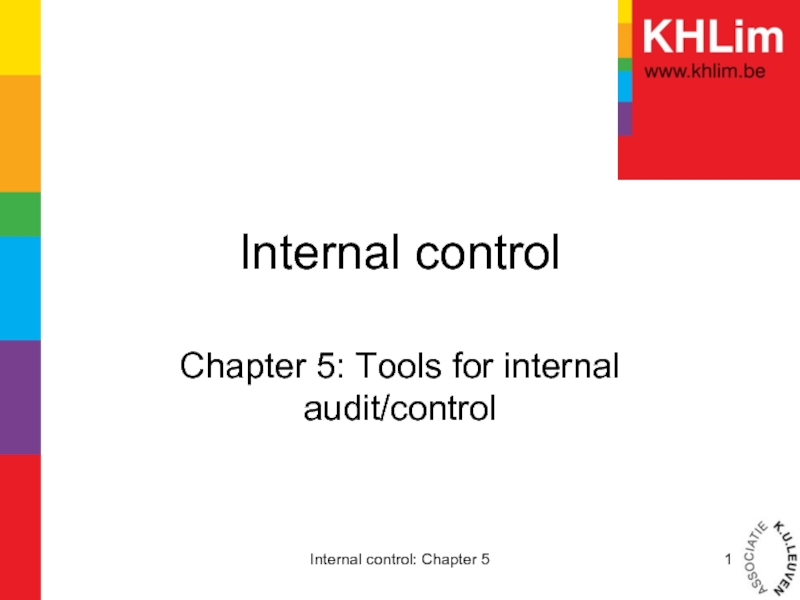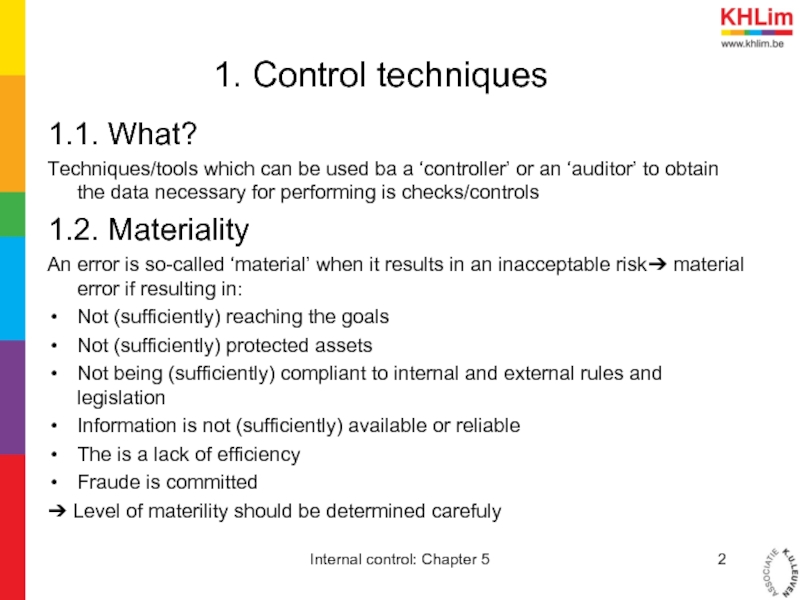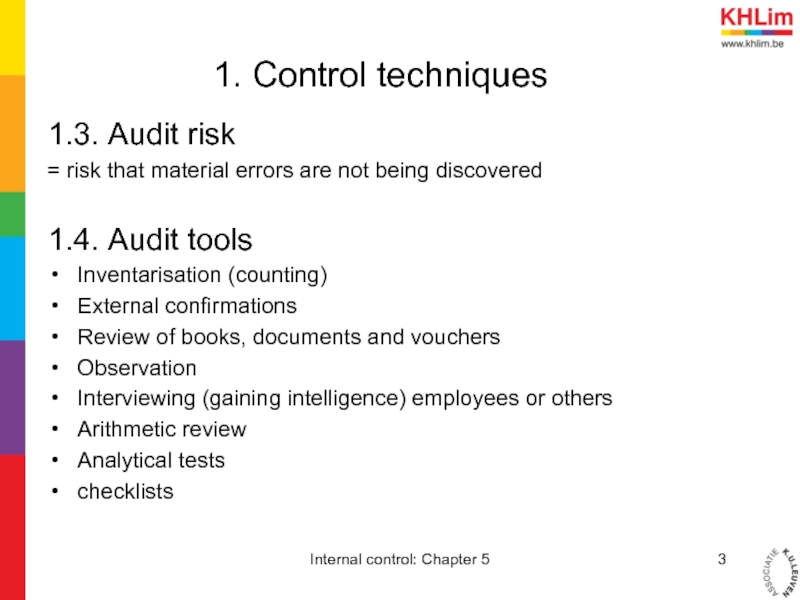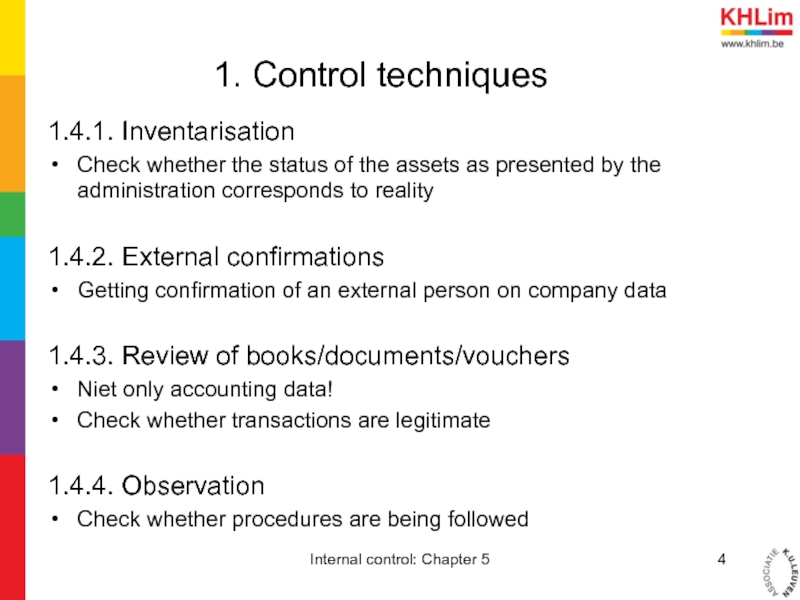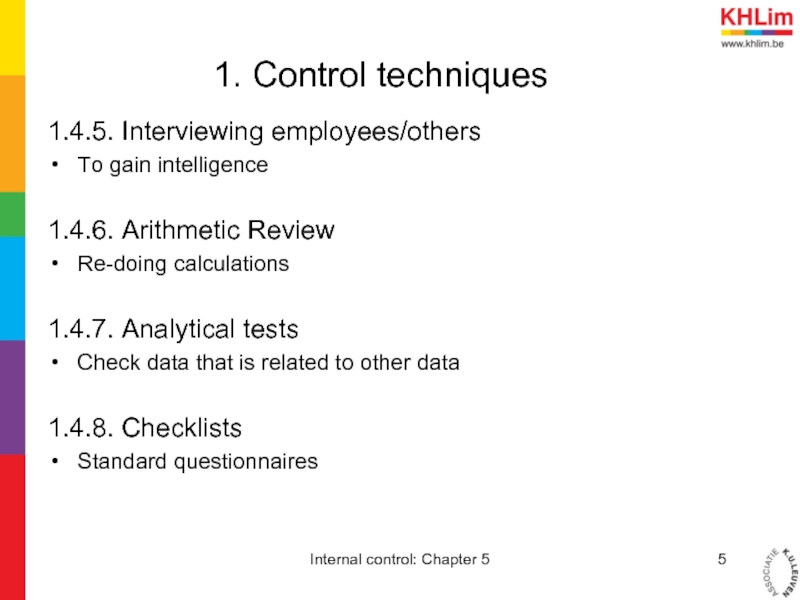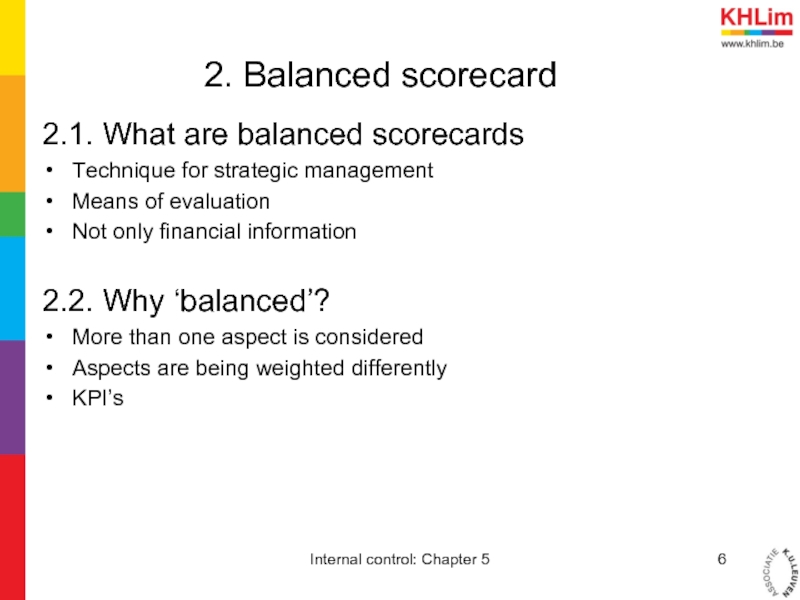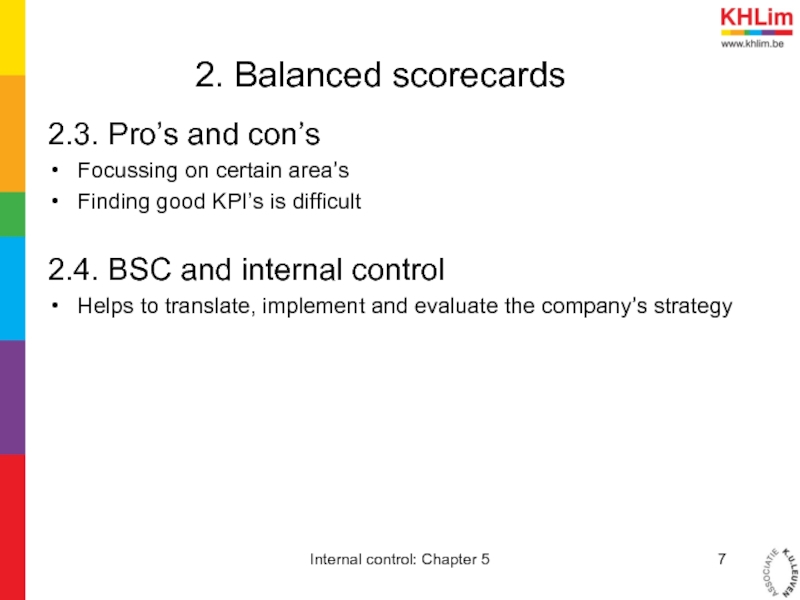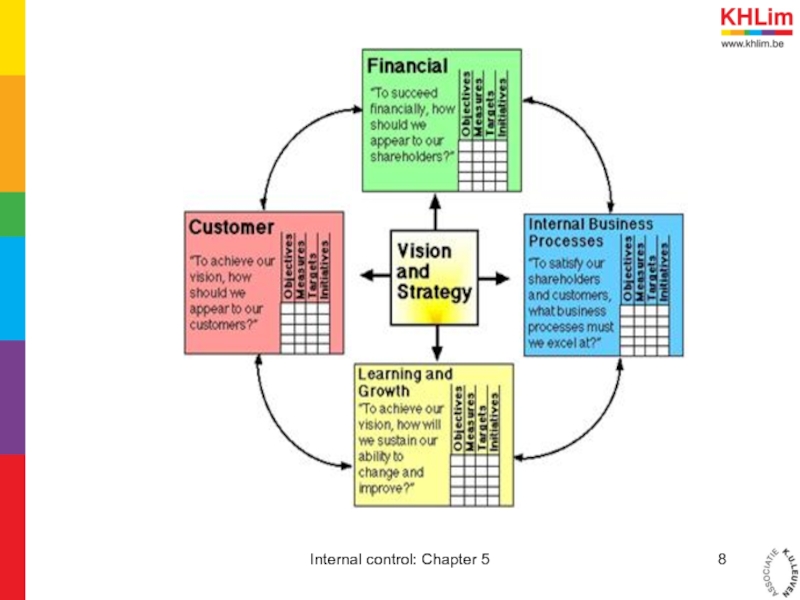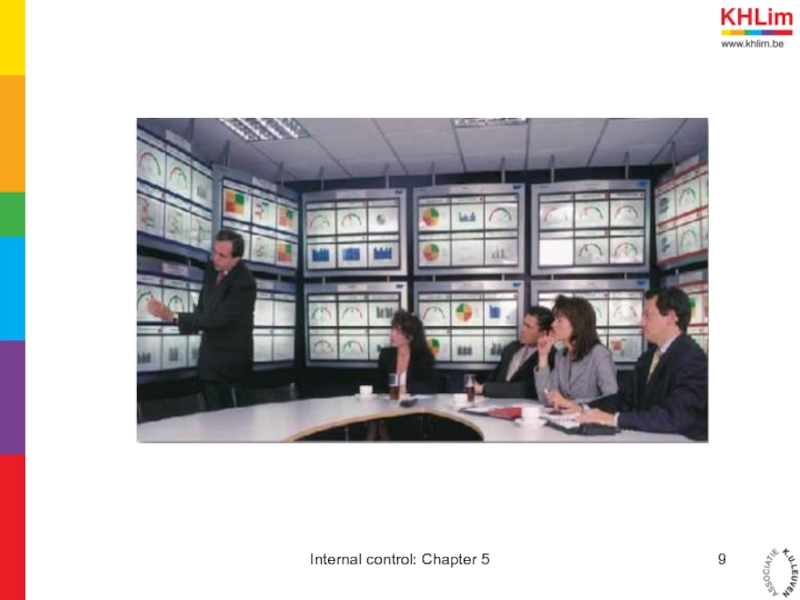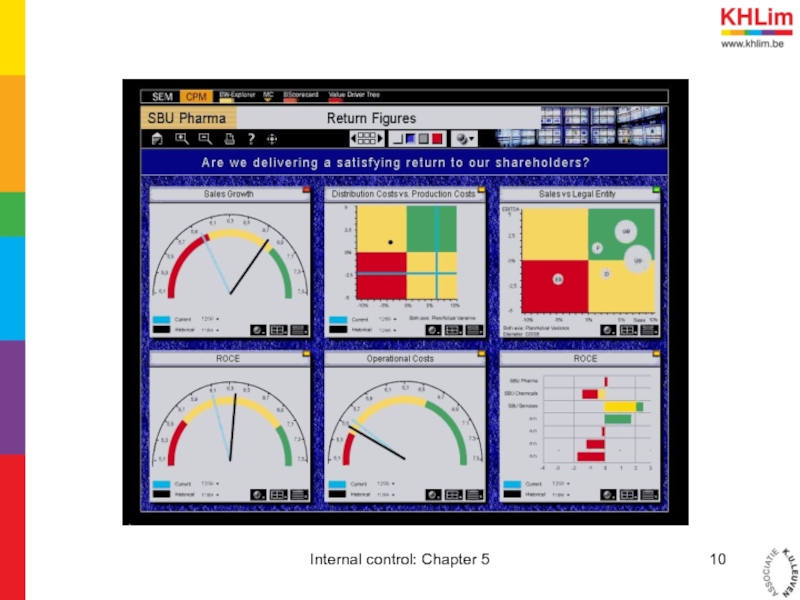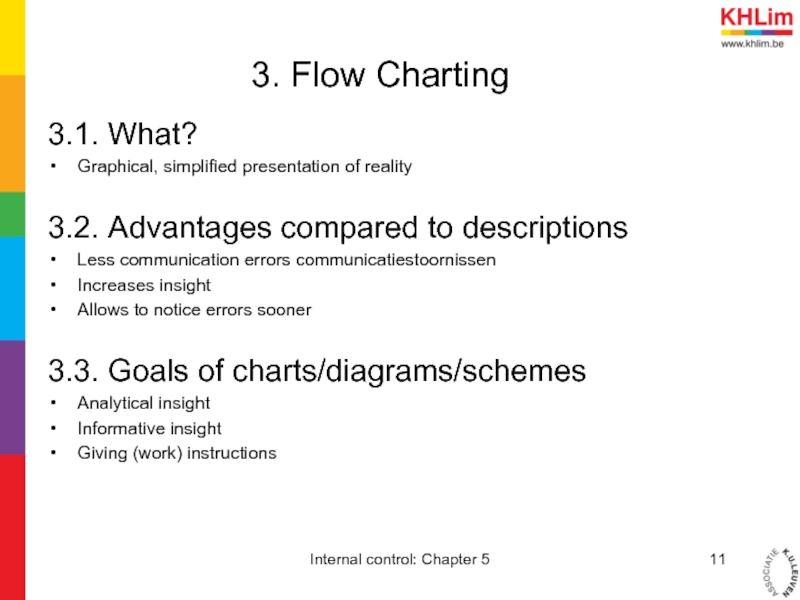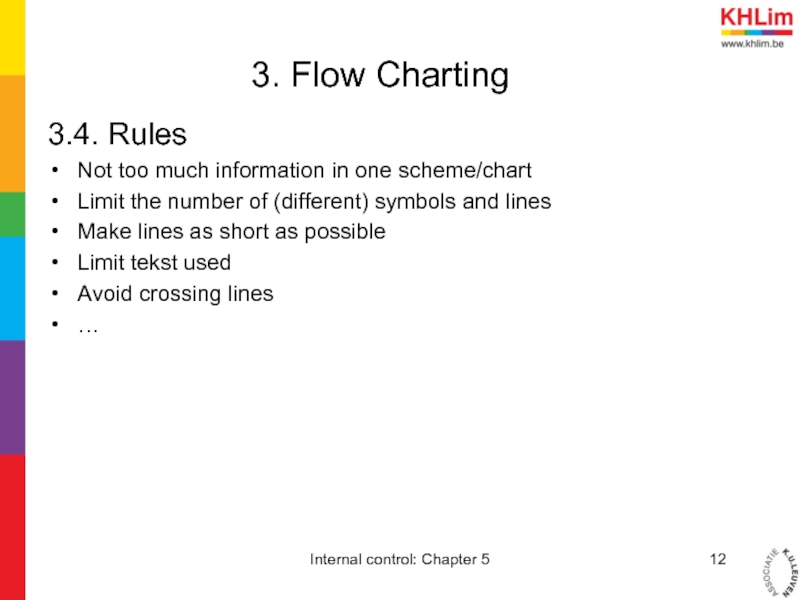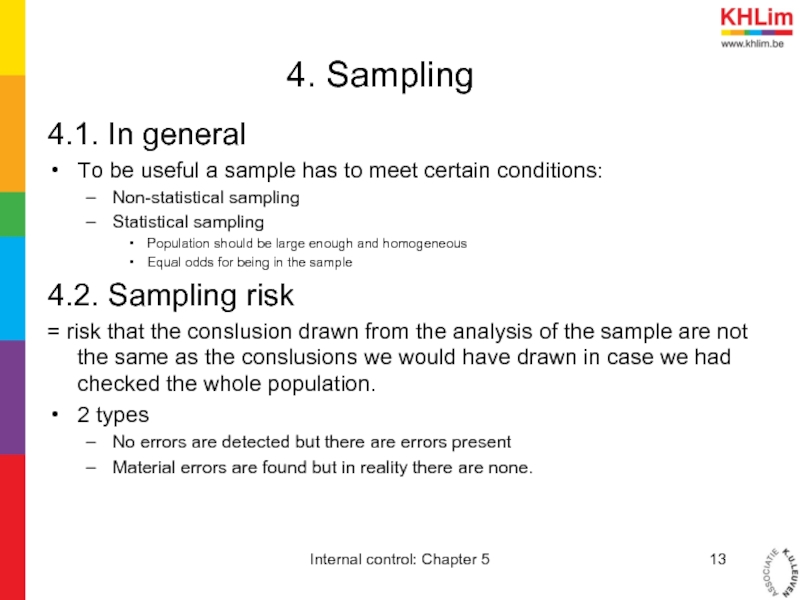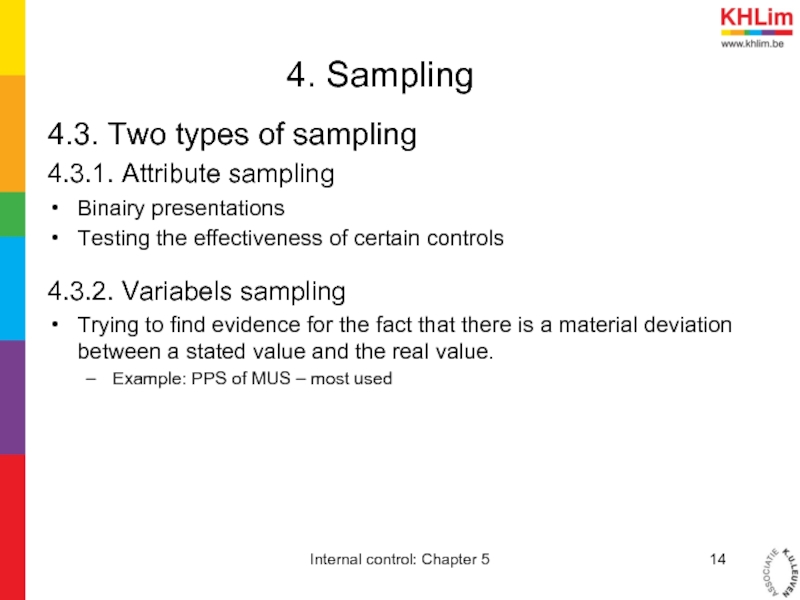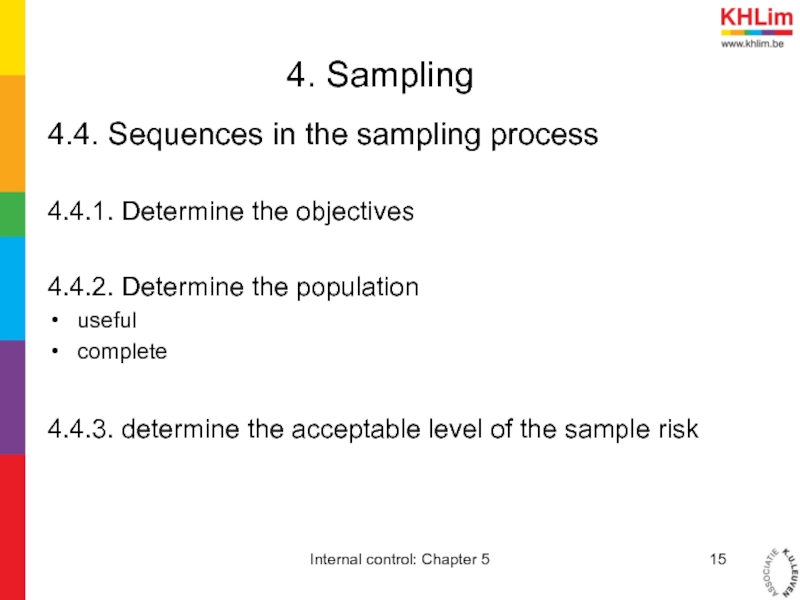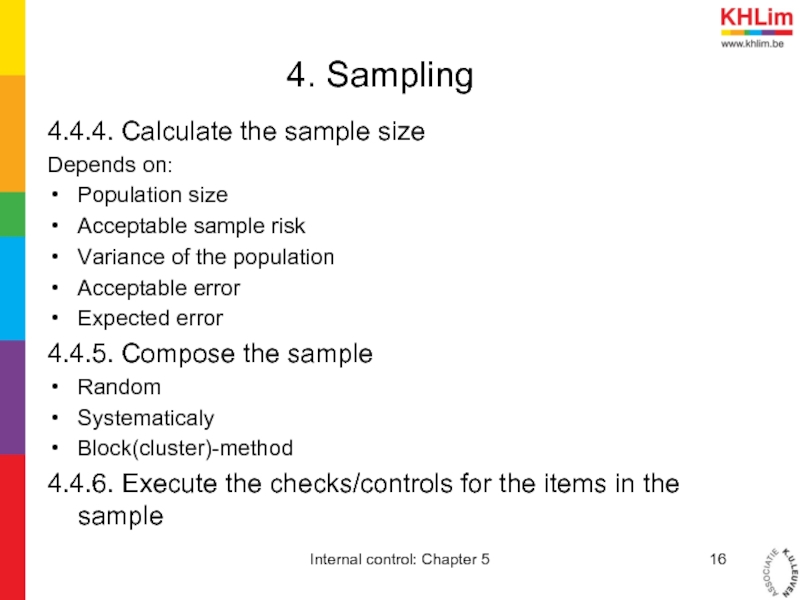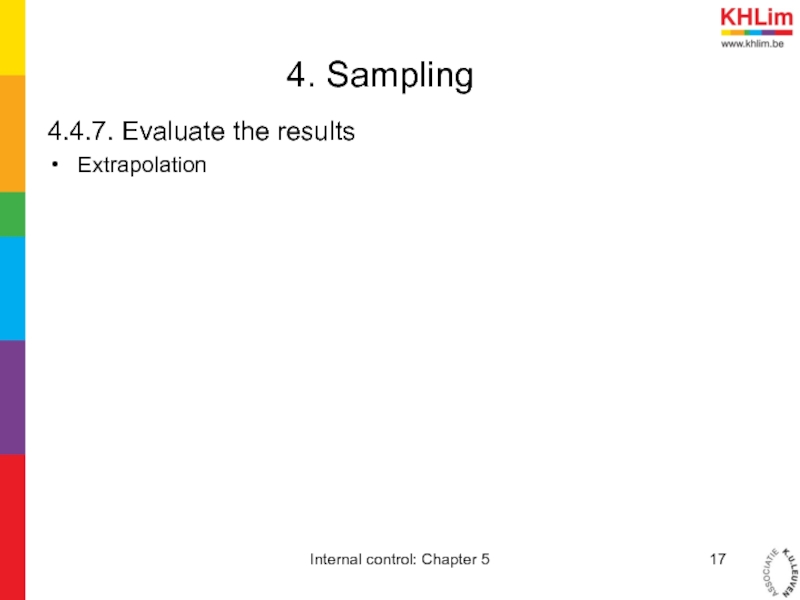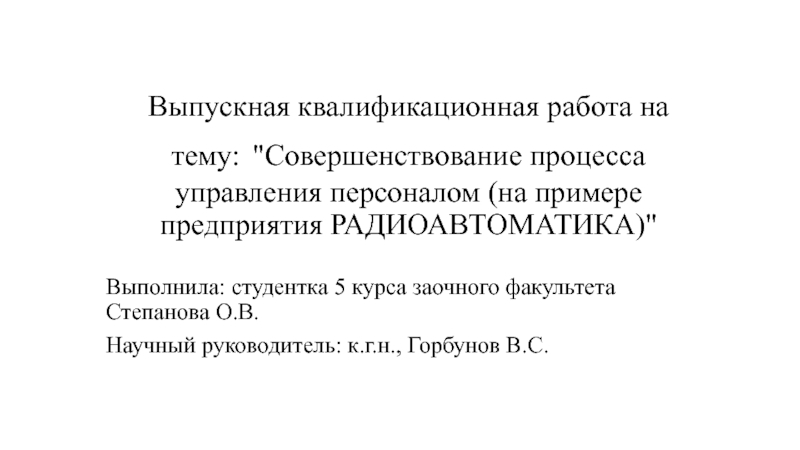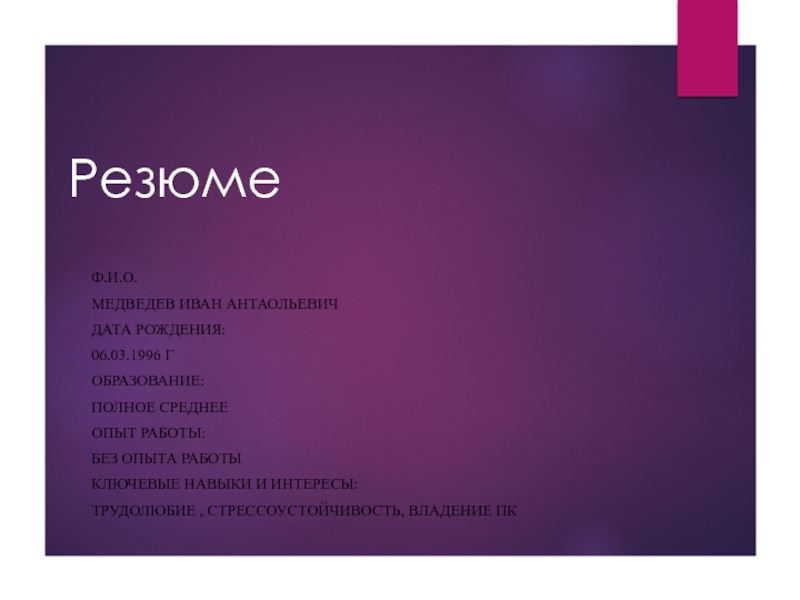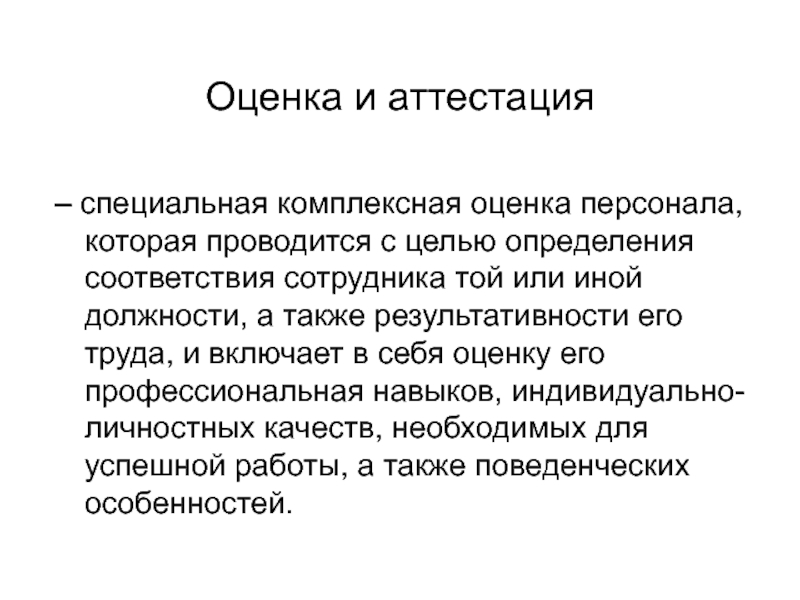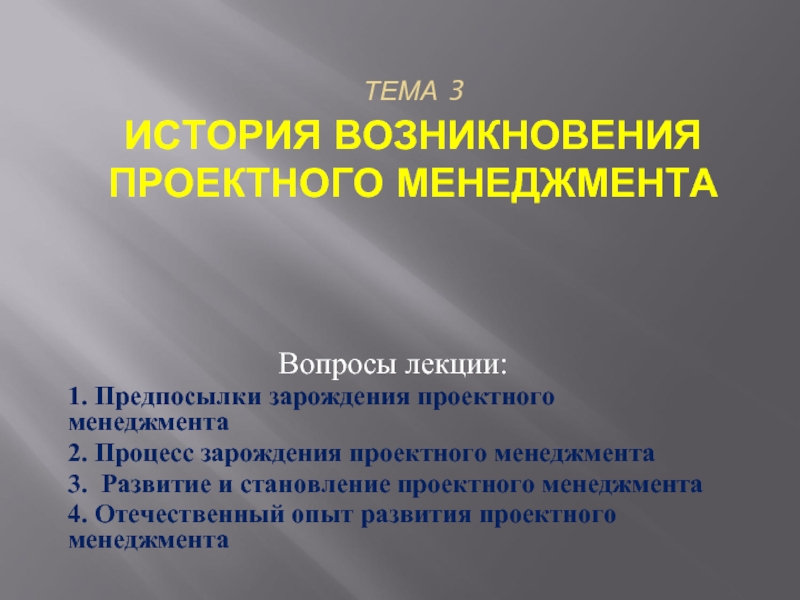- Главная
- Разное
- Дизайн
- Бизнес и предпринимательство
- Аналитика
- Образование
- Развлечения
- Красота и здоровье
- Финансы
- Государство
- Путешествия
- Спорт
- Недвижимость
- Армия
- Графика
- Культурология
- Еда и кулинария
- Лингвистика
- Английский язык
- Астрономия
- Алгебра
- Биология
- География
- Детские презентации
- Информатика
- История
- Литература
- Маркетинг
- Математика
- Медицина
- Менеджмент
- Музыка
- МХК
- Немецкий язык
- ОБЖ
- Обществознание
- Окружающий мир
- Педагогика
- Русский язык
- Технология
- Физика
- Философия
- Химия
- Шаблоны, картинки для презентаций
- Экология
- Экономика
- Юриспруденция
Internal control and deontology - Chapter 5 Tools for internal control презентация
Содержание
- 1. Internal control and deontology - Chapter 5 Tools for internal control
- 2. 1. Control techniques 1.1. What? Techniques/tools which
- 3. 1. Control techniques 1.3. Audit risk =
- 4. 1. Control techniques 1.4.1. Inventarisation Check whether
- 5. 1. Control techniques 1.4.5. Interviewing employees/others To
- 6. 2. Balanced scorecard 2.1. What are balanced
- 7. 2. Balanced scorecards 2.3. Pro’s and con’s
- 8. Internal control: Chapter 5
- 9. Internal control: Chapter 5
- 10. Internal control: Chapter 5
- 11. 3. Flow Charting 3.1. What? Graphical, simplified
- 12. 3. Flow Charting 3.4. Rules Not too
- 13. 4. Sampling 4.1. In general To be
- 14. 4. Sampling 4.3. Two types of sampling
- 15. 4. Sampling 4.4. Sequences in the sampling
- 16. 4. Sampling 4.4.4. Calculate the sample size
- 17. 4. Sampling 4.4.7. Evaluate the results Extrapolation Internal control: Chapter 5
Слайд 21. Control techniques
1.1. What?
Techniques/tools which can be used ba a ‘controller’
1.2. Materiality
An error is so-called ‘material’ when it results in an inacceptable risk➔ material error if resulting in:
Not (sufficiently) reaching the goals
Not (sufficiently) protected assets
Not being (sufficiently) compliant to internal and external rules and legislation
Information is not (sufficiently) available or reliable
The is a lack of efficiency
Fraude is committed
➔ Level of materility should be determined carefuly
Internal control: Chapter 5
Слайд 31. Control techniques
1.3. Audit risk
= risk that material errors are not
1.4. Audit tools
Inventarisation (counting)
External confirmations
Review of books, documents and vouchers
Observation
Interviewing (gaining intelligence) employees or others
Arithmetic review
Analytical tests
checklists
Internal control: Chapter 5
Слайд 41. Control techniques
1.4.1. Inventarisation
Check whether the status of the assets as
1.4.2. External confirmations
Getting confirmation of an external person on company data
1.4.3. Review of books/documents/vouchers
Niet only accounting data!
Check whether transactions are legitimate
1.4.4. Observation
Check whether procedures are being followed
Internal control: Chapter 5
Слайд 51. Control techniques
1.4.5. Interviewing employees/others
To gain intelligence
1.4.6. Arithmetic Review
Re-doing calculations
1.4.7. Analytical
Check data that is related to other data
1.4.8. Checklists
Standard questionnaires
Internal control: Chapter 5
Слайд 62. Balanced scorecard
2.1. What are balanced scorecards
Technique for strategic management
Means of
Not only financial information
2.2. Why ‘balanced’?
More than one aspect is considered
Aspects are being weighted differently
KPI’s
Internal control: Chapter 5
Слайд 72. Balanced scorecards
2.3. Pro’s and con’s
Focussing on certain area’s
Finding good KPI’s
2.4. BSC and internal control
Helps to translate, implement and evaluate the company’s strategy
Internal control: Chapter 5
Слайд 113. Flow Charting
3.1. What?
Graphical, simplified presentation of reality
3.2. Advantages compared to
Less communication errors communicatiestoornissen
Increases insight
Allows to notice errors sooner
3.3. Goals of charts/diagrams/schemes
Analytical insight
Informative insight
Giving (work) instructions
Internal control: Chapter 5
Слайд 123. Flow Charting
3.4. Rules
Not too much information in one scheme/chart
Limit the
Make lines as short as possible
Limit tekst used
Avoid crossing lines
…
Internal control: Chapter 5
Слайд 134. Sampling
4.1. In general
To be useful a sample has to meet
Non-statistical sampling
Statistical sampling
Population should be large enough and homogeneous
Equal odds for being in the sample
4.2. Sampling risk
= risk that the conslusion drawn from the analysis of the sample are not the same as the conslusions we would have drawn in case we had checked the whole population.
2 types
No errors are detected but there are errors present
Material errors are found but in reality there are none.
Internal control: Chapter 5
Слайд 144. Sampling
4.3. Two types of sampling
4.3.1. Attribute sampling
Binairy presentations
Testing the effectiveness
4.3.2. Variabels sampling
Trying to find evidence for the fact that there is a material deviation between a stated value and the real value.
Example: PPS of MUS – most used
Internal control: Chapter 5
Слайд 154. Sampling
4.4. Sequences in the sampling process
4.4.1. Determine the objectives
4.4.2. Determine
useful
complete
4.4.3. determine the acceptable level of the sample risk
Internal control: Chapter 5
Слайд 164. Sampling
4.4.4. Calculate the sample size
Depends on:
Population size
Acceptable sample risk
Variance of
Acceptable error
Expected error
4.4.5. Compose the sample
Random
Systematicaly
Block(cluster)-method
4.4.6. Execute the checks/controls for the items in the sample
Internal control: Chapter 5
